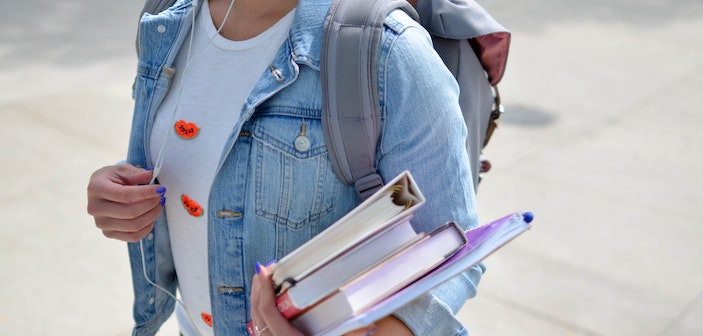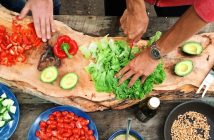Test prep, test prep, test prep. It’s been drilled into the minds of students and parents since 1935 when Harvard required SAT scores to be included in its admission package. But in recent years many schools like George Washington University, Sarah Lawrence, and NYU have become “test-optional” or “test flexible,” meaning you are not required to send in SAT or ACT scores. Moreover, several universities including UC Berkley and my own alma matter CUA have become “test blind,” and they won’t even consider test scores in their application process.
While many students are breathing a sigh of relief, it begs the question: What should students be focusing on as they prepare for the college application process. I reached out to Hamilton Gregg, a college advisor at Harrow Beijing and senior consultant at Shang Nancy Friends with more than 30 years of experience in admissions, to find out more about this shifting landscape.
Aside from the obvious – a solid academic foundation – he stressed the importance of so-called soft skills like leadership, adaptability, communication, presentation, problem-solving, and work ethic. “But it is not just talking about those skills, it is understanding what led to the development of those skills,” says Gregg. “Sports, clubs, charity, service, etc… students doing meaningful work in these areas and learning about themselves and how they contribute by engaging in them.”
Those clubs, sports, and service projects have come to be known as a student’s portfolio. And in academic circles, it’s the new buzzword and possibly the most important part of their application next to their grades. That is because every candidate to a top-tier school has excellent grades. Your transcript will get you considered but your portfolio is what will set you apart from the rest of the field.
So what makes a great portfolio? Gregg says it largely depends on “Understanding who they are as a person. What makes them tick, what doesn’t? What do they enjoy doing? Where have they failed or been challenged and what did they learn from that experience? How did they engage in teamwork, collaboration and what did they learn from that experience?” That’s a tall order for most kids. I know plenty of adults who still struggle to define who they are, but that’s what your childhood is for – discovering what you are passionate about and what you want to become an expert in.
That means starting early. A balanced childhood filled with trying lots of different things and asking your child, what did you like about that? What did you not care for? What did you learn? And slowly discarding those activities that don’t bring them joy or spark curiosity and engagement. By the time they get to high school they should have a handful of activities they are passionate about and devoted to outside the classroom. Gregg had three specific guidelines he recommends.
- “A student should not do any activity because they think it will get them into university. They should be genuinely interested in what they are doing and reflecting on why as well as what have they learned.
- “Quality over quantity. It is not about how many things a student has engaged in, but the quality of their engagement.
- “There is no right activity, nor is there a right amount of things a student should be doing. However, a student should be more than just an in-class student focusing on their academic achievement…Education happens everywhere, all the time. Many times, it is not in the classroom, but on the sports field, the adventure trek, the community service project…”
This brings us to community service. Many high schools require it and it is a learning opportunity, but the debate rages over whether mandating good works nullifies the benefits. Gregg weighed in on this as well. “Should they? Absolutely! But if they do, they should do more than just give money, which seems to be the translation of community service. Community service is actually being of service, giving back to the community and actively participating and helping others less fortunate.”
Over and over again Gregg’s theme was quality over quantity and the ability to learn from failures as well as successes. It sounds an awful lot to me like what colleges are looking for are healthy, happy, unique young adults who are eager to learn and contribute to society.
“One thing that is important is that there is no formula for getting into university, especially top universities. One of the downfalls of high-stake admissions is that people – students and parents believe there is this formula they need to follow,” says Gregg. “They look at other successful students and think ‘hey, we need to do that to get in.’ Totally wrong assumption. Students need to understand they are unique individuals and honor and respect their uniqueness. Life is not about a test, or just doing for the focus of getting into university, it is about learning life-long skills, character skills, that will help students manage and cope through life. They may come from their education, they may come from activities, or conversations that lead to something new and exciting. My point is, don’t be a sheep following what others are doing. Break out and be yourself and then truly know who you are and what got you to that point of understanding.”
My takeaway? In the early years, expose your child to soccer and debate and music and art and design and science and any other opportunities that pop up. Brush them off and help them learn from their failures and cheer on their successes. See what lights them up and then help them focus on that in high school. Let’s not replace testing anxiety with portfolio pressure. Instead of pushing our kids to “get it right” let’s help them discover what’s right for them. The rest will take care of its self.
KEEP READING: What’s In Your Bag? With Tina Makuku, Mom, and Founder of Chariots Handmaydz
Images: Unsplash





